Compound investing - Creating a DRIP portfolio (Canada)
My ideas and thoughts are not financial advice. Experiences based on USD and CAD stocks.
 "My wealth has come from a combination of living in America, some lucky genes, and compound interest." - Warren Buffett.
"My wealth has come from a combination of living in America, some lucky genes, and compound interest." - Warren Buffett.
"Compound interest is the eighth wonder of the world. He who understands it, earns it ... he who doesn't, pays it." - Albert Einstein.
With the recent COVID lockdowns and introduction of new do-it-yourself investing platforms, there's been an influx of retail investors. As someone who recently started investing, I've been curious about the DRIP portfolio. Here are some thoughts that might give you some ideas for your implementation.
Before I dive further, here's some terminology that will help you understand my notes better:
- Dividend: A dividend is a corporation's distribution of profits to its shareholders. In layman's terms, think of it as a cashback incentive that you get for essentially owning the stock.
- Ex-Dividend date: Usually set one business day prior to the record date. It is recommended to purchase stock the day prior to this pre-specified date as it typically takes one business day for the transaction to be posted to your account.
- Record date: Generally the day after the ex-dividend date. Shareholders of a particular stock on this pre-specified date are eligible to get the dividend payout.
- DRIP: Dividend Re-Investment Program.
- Dividend Kings: Stocks that have consecutively increased their dividend payout for 50+ years.
- Dividend Aristocrats: Stocks that have consecutively increased their dividend payout for 25+ years.
- Bull market: When the market trends higher, thus creating higher highs and higher lows.
- Bear market: When the market trends lower, thus creating lower highs and lower lows.
- Day Trading: Buying a stock at a lower price and selling it the same day for a profit, mostly driven by real-time news.
- Swing Trading: Buying a stock at a lower price and selling it once it reaches a certain higher expected level. This could take a couple of days, weeks, or even months. Usually helpful when expecting any major upcoming collaborations, positive news, or increase in profits.
How does DRIP work?
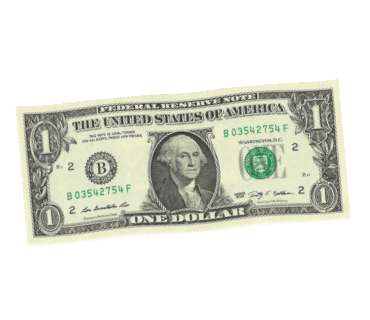 Any time a particular stock pays out a dividend, the payout amount (assuming it covers the cost of one full share) is used towards buying more of that specific stock, generally at a slightly lower/discounted rate than the market price, without an additional commission fee!
Any time a particular stock pays out a dividend, the payout amount (assuming it covers the cost of one full share) is used towards buying more of that specific stock, generally at a slightly lower/discounted rate than the market price, without an additional commission fee!
This method is most useful for long term investors and works best when you can set money aside that you won't have to touch for years to come. It's essentially a retirement plan.
How/Where do I start?
Based on your budget, look for stocks that will pay you the amount of at least one full stock + a 'safety margin.' For calculation and further discussion, I'm going to use AT&T as an example as it is one of the most talked about dividend stocks as it is under $30 and is also a Dividend Aristocrat.I'm using TradingView to pull the current stock price for AT&T (NYSE:T). This is updated in real-time and will also serve as a time capsule of sorts to compare current stock price with the calculations and stock price captured in the screenshot as of December 24, 2020.
I'm using Yahoo Finance's online website to get information on dividends for stock AT&T (NYSE:T). You can also use the mobile app. Notice the highlighted "Forward Dividend & Yield" section in the first screenshot with a value of 2.08.
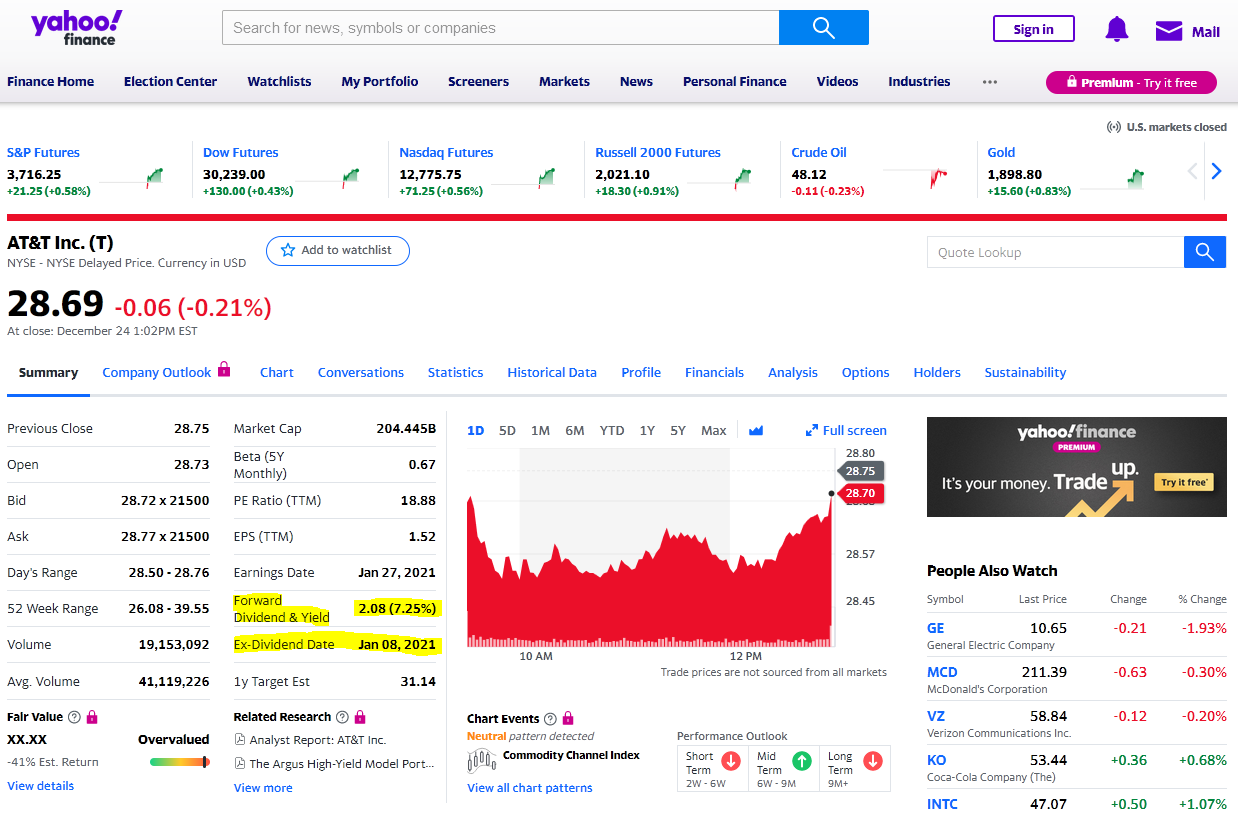
To get an idea of how much a stock pays for the dividend (per share) and how frequently, navigate to the "Historical Data" section and choose "Show: Dividends Only."
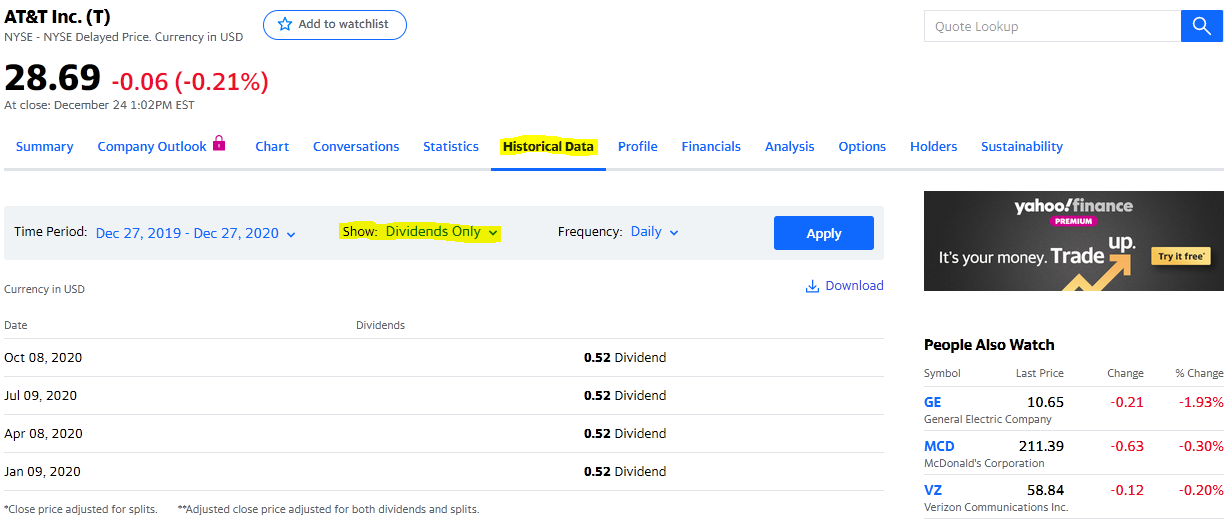
Calculations
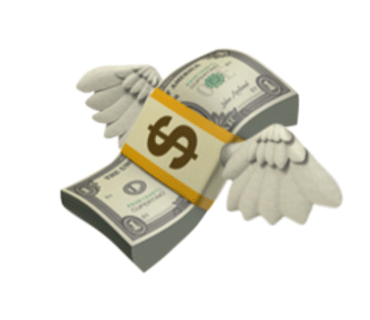 In our AT&T example screenshot above, we can see it is a quarterly payment of $0.52/share. If you have 100 shares, you get a quarterly payout of $52 or an annual payout of $208.
In our AT&T example screenshot above, we can see it is a quarterly payment of $0.52/share. If you have 100 shares, you get a quarterly payout of $52 or an annual payout of $208.
Assuming $3000 USD to invest, you could buy:
100 shares @ screenshot value of $28.69 = $2869, or
58 shares @ screenshot value of $28.69 = $1664
58 shares would give you a quarterly payout of $30.16, thus resulting in the value of 1 whole share + a safety margin of $1.47. You could use the leftover amount ($3000 - $1664 = $1336) to buy another dividend stock to diversify the portfolio.
My "safety margin"
Based on AT&T's stock trend, a safety margin of $1.47 would ensure that even if the stock price appreciated over several months, you would probably still get a dividend payout that would cover one whole share's worth.Portfolio diversification
From the calculations above, as long as you keep a decent safety margin, diversifying in several dividend paying stocks is ideal. This would obviously be decided on your budget, risk tolerance, and experience.Cool... but I don't have thousands of dollars to invest?
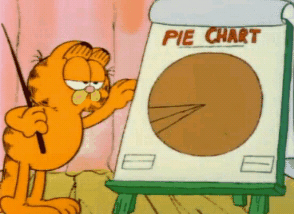 This is where $0 commission fee trading platforms would help. For example, using the 'WealthSimple Invest' account, you could set up an automated money deposit (you can choose these deposits' amount and frequency). The account auto-invests it based on your strategy and choices. In Canada, you can't buy fractional shares; however, Wealthsimple can somehow invest fractionally.
This is where $0 commission fee trading platforms would help. For example, using the 'WealthSimple Invest' account, you could set up an automated money deposit (you can choose these deposits' amount and frequency). The account auto-invests it based on your strategy and choices. In Canada, you can't buy fractional shares; however, Wealthsimple can somehow invest fractionally.
Read my detailed review of Wealthsimple here!
Is there a disadvantage to DRIP?
With the ever-increasing do-it-yourself and $0 commission fee investing platforms like Questrade, WealthSimple, Robinhood, etc., the main advantage of DRIP (re-investing in the same stock with no commission fee) seems to be outdated. DRIP, however, can take the emotion out of investing.While some people may argue that they'd instead get the cash payout and then buy more of whatever stock they think will be more beneficial, I'd like to think DRIP avoids the whole "time the market - buy low and sell high" scenario. Some people might keep waiting for a price to become more favorable and thus end up with the payout cash merely sitting in their account.
Key takeaways
- Only invest in stocks that fundamentally show a trend to appreciate over the long run. There's no point in accumulating shares that are losing value in the long run.
- A dividend payout is not guaranteed to last forever. Based on a company's profits and sustainability, the dividend could increase, decrease, or be cut entirely. Make sure you're monitoring your portfolio's holdings regularly.
- Investing in 'Dividend Kings' and 'Dividend Aristocrats' type stocks generally ensures continuous dividend payout and appreciation.




